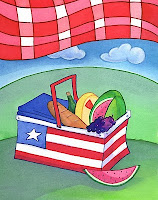 "No-till farming, as its name indicates, does away with the mechanical churning of the soil between crops. Rather than being plowed under, agricultural wastes are left on top of the soil, where they decompose more slowly. The intact soil suffers far less erosion, retaining more nutrients. In addition, it holds water more effectively and, with minimal compaction by heavy equipment, is well-aerated. Less tillage of soil reduces labor, fuel, and machinery costs for farmers." (Source: http://earthtrends.wri.org/updates/node/286)
"No-till farming, as its name indicates, does away with the mechanical churning of the soil between crops. Rather than being plowed under, agricultural wastes are left on top of the soil, where they decompose more slowly. The intact soil suffers far less erosion, retaining more nutrients. In addition, it holds water more effectively and, with minimal compaction by heavy equipment, is well-aerated. Less tillage of soil reduces labor, fuel, and machinery costs for farmers." (Source: http://earthtrends.wri.org/updates/node/286)Interesting. Natural. Makes sense.






